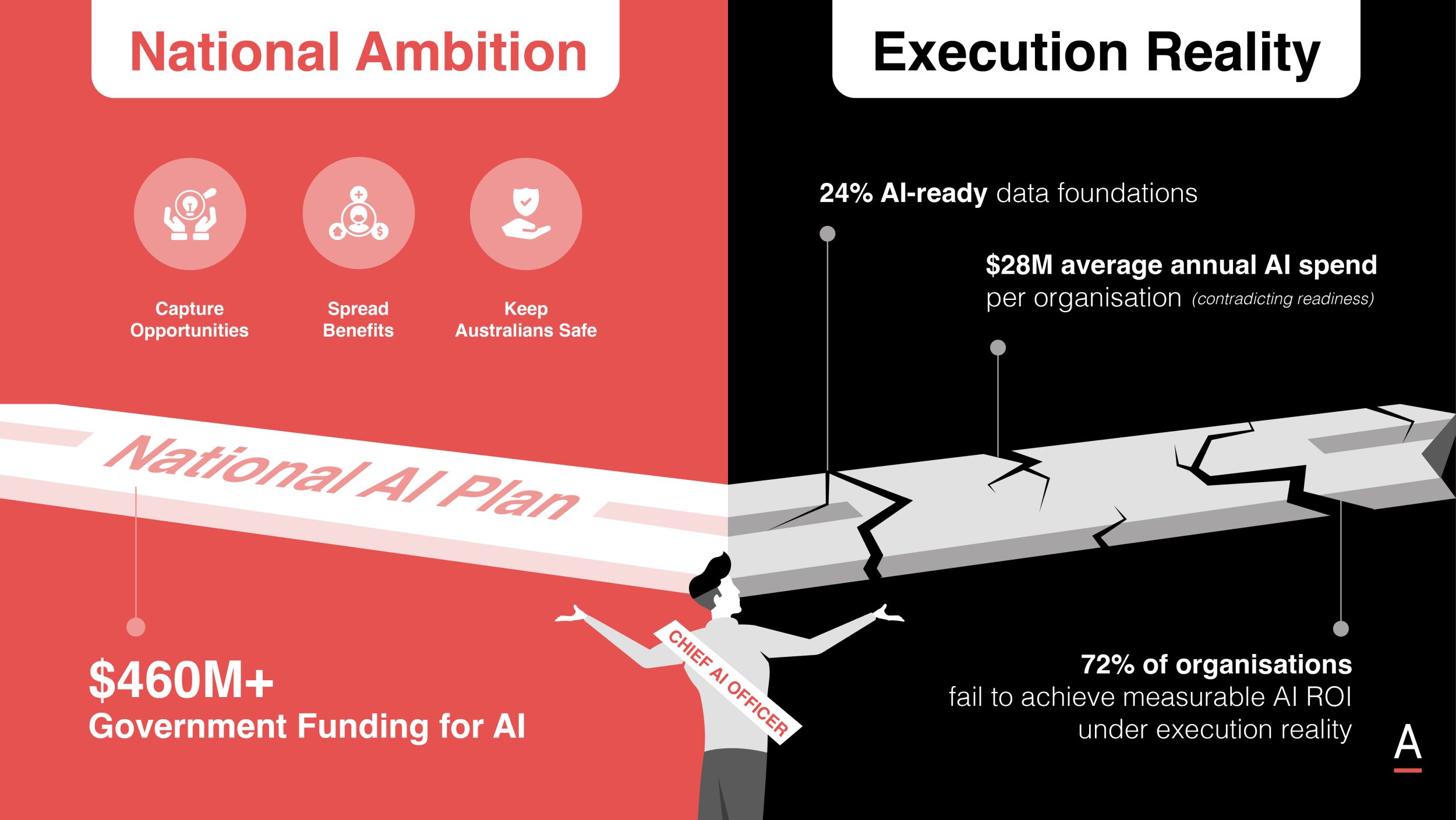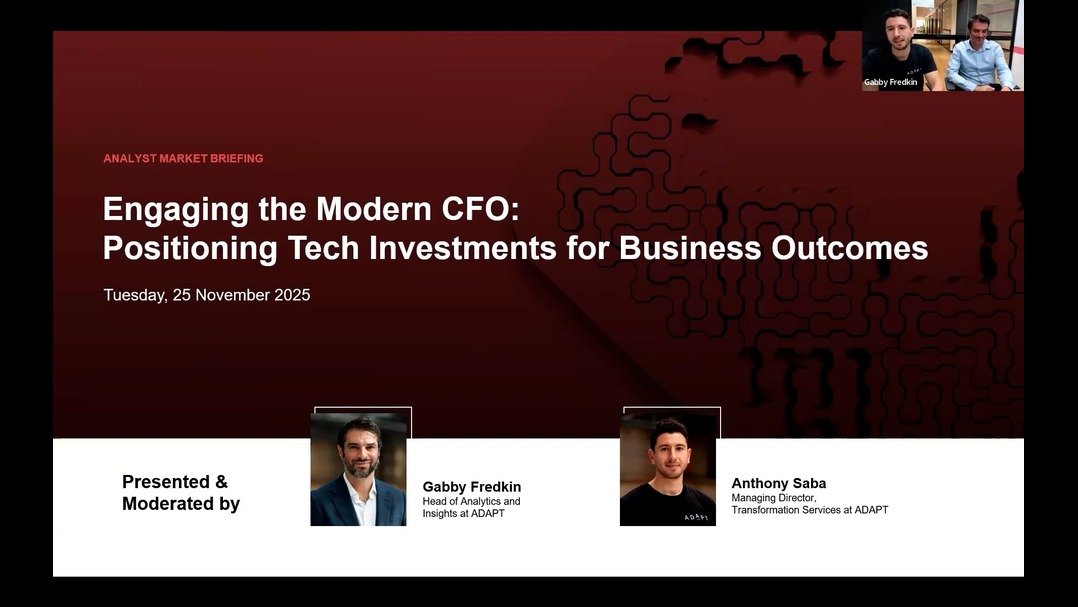Australia’s AI Readiness: Preparing for a 35% Compute Increase
Aussie infrastructure leaders strive for efficiency and resilience, battling legacy systems and limited resources, while AI drives the need for modernisation and data strategy.
Aussie infrastructure leaders face immense pressure to enhance resilience, efficiency, speed, security, and compliance, all while reducing costs.
They are managing complex environments, aiming for simplification and improved visibility of assets and costs, while tackling persistent challenges like legacy systems, technical debt, and limited resources.
The question is how to make infrastructure fit for the digital age with the right blend of on-premises, co-location, and third-party cloud solutions to optimise compute, network, and storage efficiency.
Modernisation is a universal goal—shifting from legacy systems to data-driven, automated, secure, and AI-powered operations.
Robust digital infrastructure is key.
The demand for infrastructure is skyrocketing, with AI driving the largest growth curve in history. Dean Nelson notes that global digital infrastructure capacity is set to triple in the next decade.
CIOs, CISOs, and data leaders indicate that continuing business as usual is not an option.
ADAPT’s research into Australia’s AI readiness highlights the need for better data strategy, architecture, culture, and infrastructure.
At Cloud & Infrastructure Edge, we brought together over 150 Aussie CTOs, Heads of Cloud, Infrastructure, Data Centre, Architecture and Engineering.
ADAPT’s 2024 study of 158 Australian infrastructure leaders found that compute needs will increase by 35% within the next two years.
Leaders face barriers like limited resources, technical debt, and cost pressures.
With a focus on tech modernisation, cost optimisation, and building a secure organisation, leaders are navigating a complex landscape that requires strategic investments and targeted actions.
Driving tech modernisation and simplification
According to the ADAPT Cloud and Infrastructure Edge July 2024 Survey, tech modernisation and simplification are among leaders’ top priorities.
During his Cloud & Infrastructure Edge presentation, Matt Boon ADAPT’s Senior Research Director, noted that organisations have made great strides, reporting about 52% progress in their modernisation efforts, highlighting these as crucial goals for the coming year.
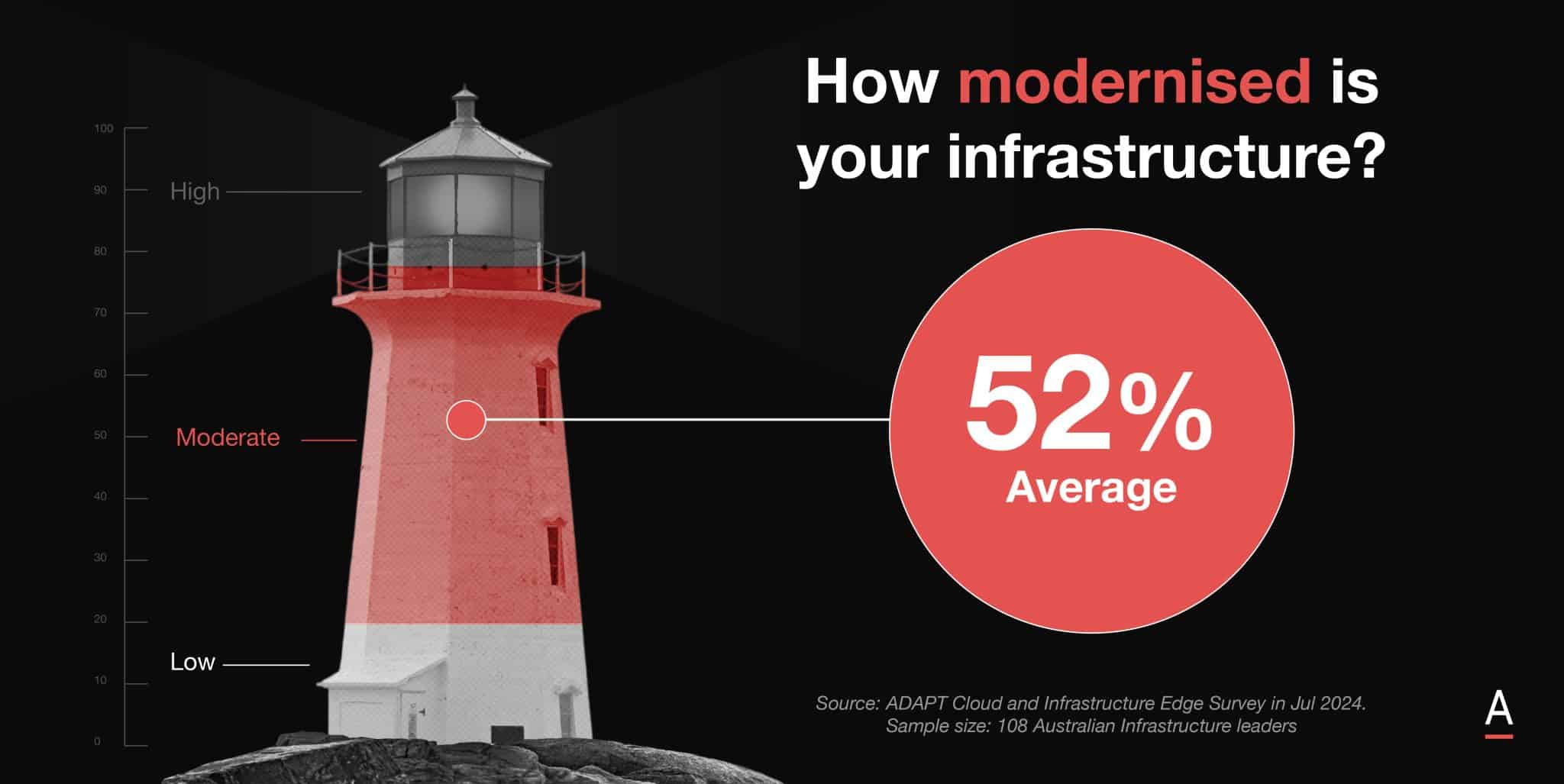
Specifically, 28% of leaders are concentrating on multi-cloud migration and unification. This enables organisations to harness the best features of various cloud platforms, thereby enhancing efficiency and scalability.
Matt highlighted the need for benchmarking current workloads to identify the optimal cloud environments.
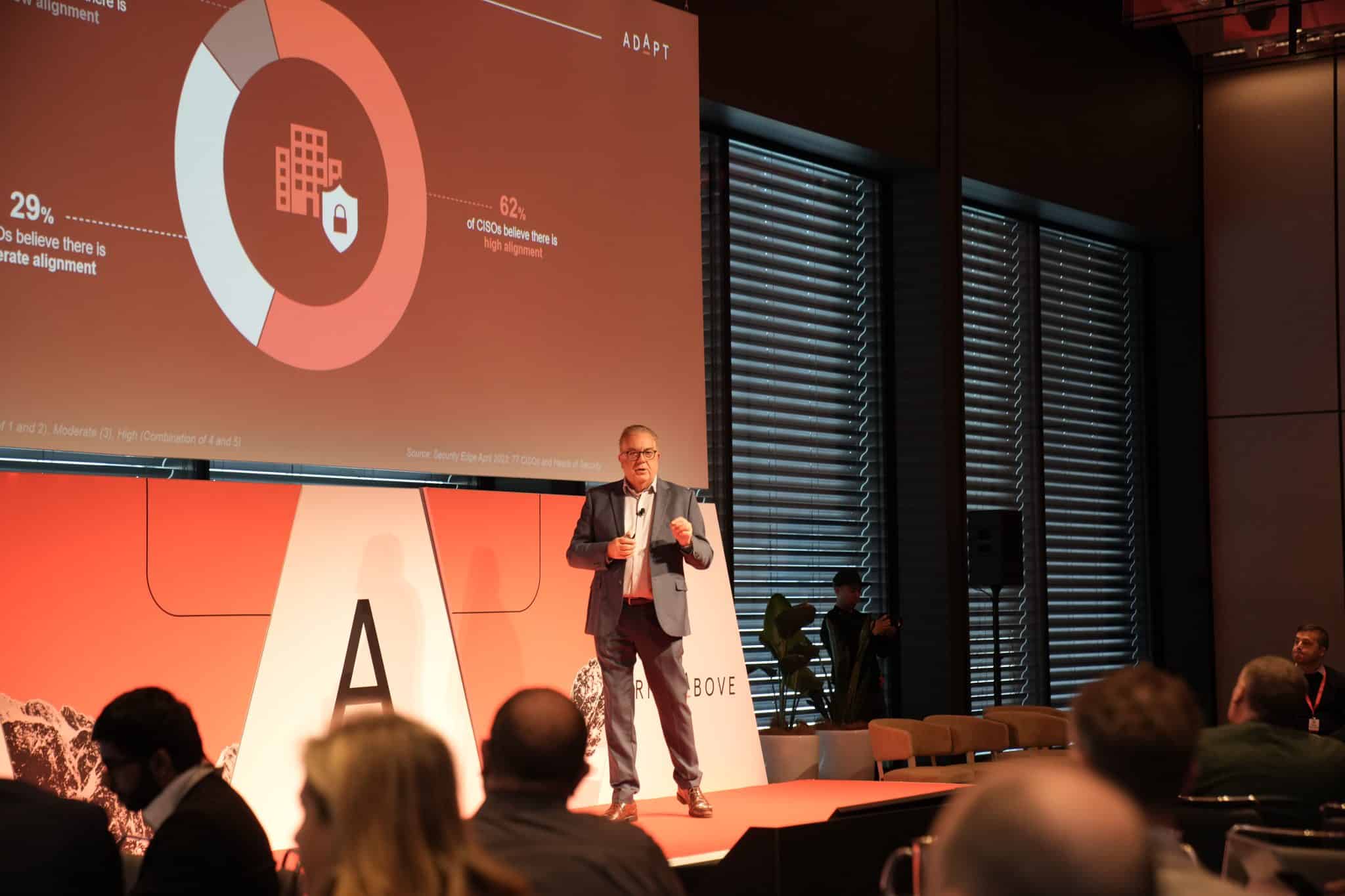
He also emphasised the top factors impacting modernisation: technology reduction, consolidation, connectivity, automation, and public cloud adoption.
These factors collectively enhance organisational agility and streamline operations.
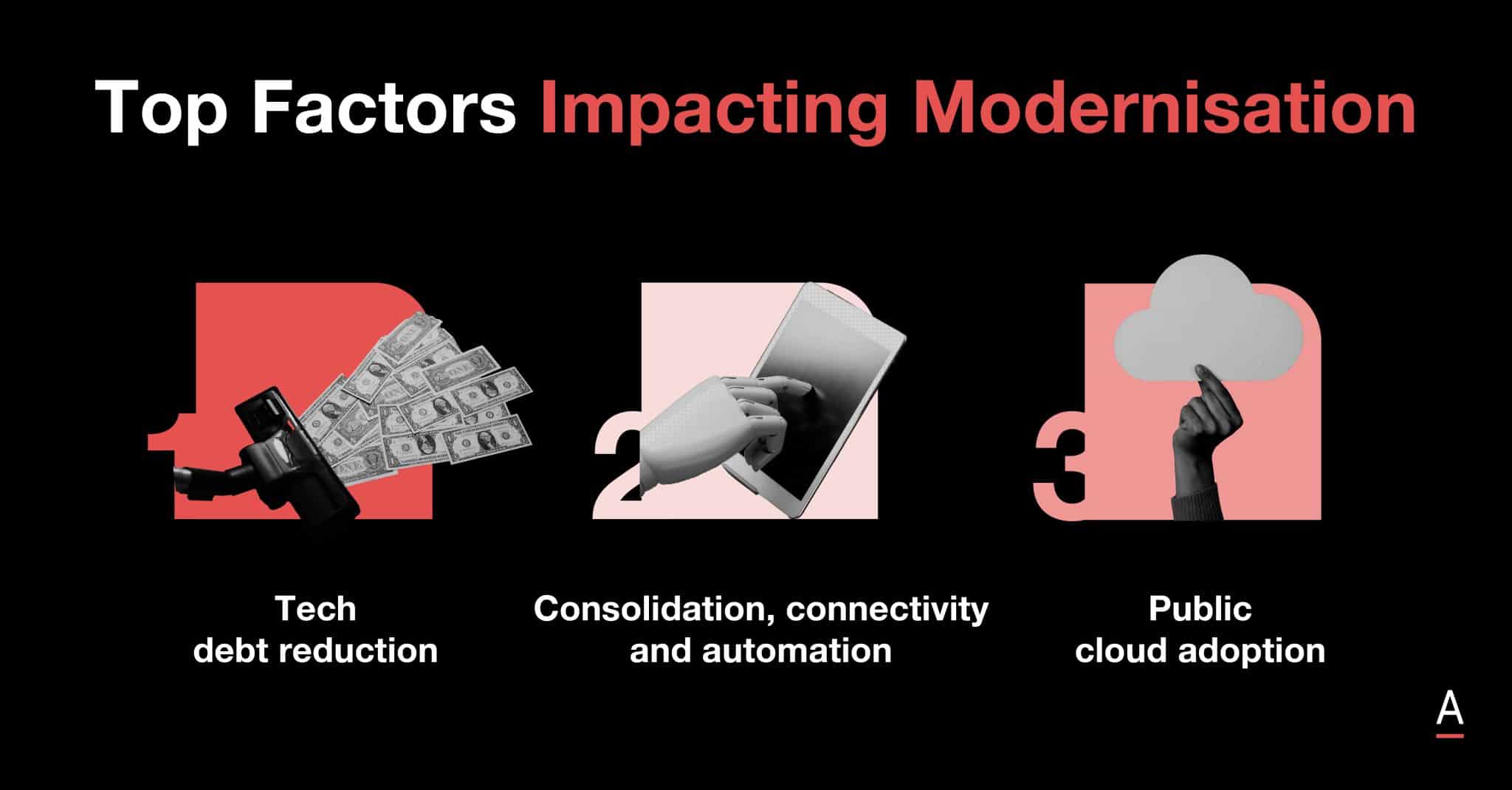
Using tools that seamlessly integrate and manage multiple clouds can make operations more modern and efficient.
Key Takeaway: Prioritise multi-cloud migration and unification to leverage various cloud platforms for improved efficiency and scalability.
Optimising costs and enhancing efficiency
Cost optimisation is crucial as organisations manage expenses while investing in new technologies.
The ADAPT Cloud and Infrastructure Edge Survey from July 2024 reveals a notable shift, with 31% of workloads now hosted in-house—a 63% decrease since the pandemic’s height—while 46% are in the public cloud.

During his presentation, Dr Patrick Maes, CTO, CIO, Chief Architect & IT Strategist, detailed effective modern cloud adoption strategies.
Drawing from his dual experiences as a chief architect at a global financial institution and ex-chairman of the European Banking Federation Cloud Forum, Dr Maes emphasised the importance of a comprehensive cloud adoption capability, including strategy, application inventory, and business case development.
Regularly reviewing cloud service contracts and automating cost-saving policies can lead to considerable savings.
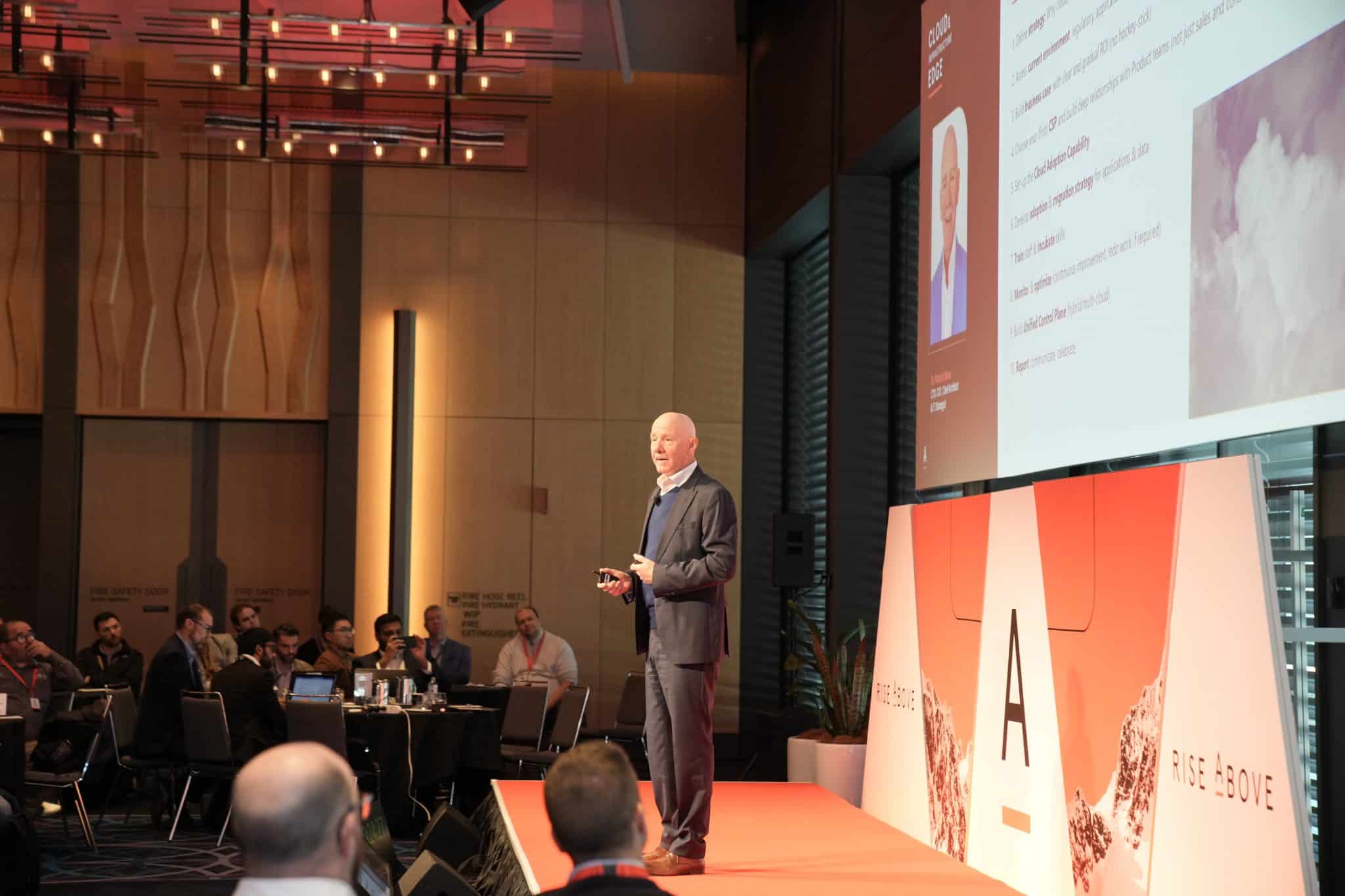
He also introduced “Swapo,” an industry-led organisation that promotes data portability and cloud switching, facilitating smoother transitions and flexibility in cloud environments.
Additionally, addressing technical debt, ranked as the fourth initiative in the same Cloud & Infrastructure Edge survey, can free up funds necessary for growth and modernisation.
Key Takeaway: Implement comprehensive cost optimisation strategies and address technical debt to free up funds for growth.
Enhancing security and trust
Security is a major concern. Imagine leading a team where 61% are focused on advanced solutions like Zero Trust models and AI-driven threat detection, aiming to stay ahead of threats.
Conducting regular security audits and penetration tests helps identify and fix vulnerabilities.
Dean Nelson, Chairman and Founder at Infrastructure Masons, noted the rapid expansion of global digital infrastructure capacity, stressing the need for robust security measures.
He highlighted unprecedented growth driven by the global pandemic and the rise of generative AI, presenting critical challenges for security and trust within the industry.

Preparing for these demands is essential as digital infrastructure is expected to double within five years and triple in ten.
Dean advocated for collaboration among major digital infrastructure companies to address these challenges, particularly focusing on decarbonising building materials, equipment, and energy sources to ensure sustainable and secure growth.
Key Takeaway: Invest in advanced security solutions and conduct regular audits to build a trustworthy organisation.
Overcoming funding and talent barriers
Funding limitations remain a top challenge for 2024.
To address this, leaders must optimise existing resources by performing detailed audits to identify and reallocate redundant or underutilised assets to high-priority projects.
Jason O’Connell, CTO – Banking and Financial Services at Macquarie Group, highlighted the importance of strategic investments in cloud infrastructure for long-term cost savings.
Macquarie Bank reduced operational costs and enhanced scalability and performance by adopting a cloud-first strategy.
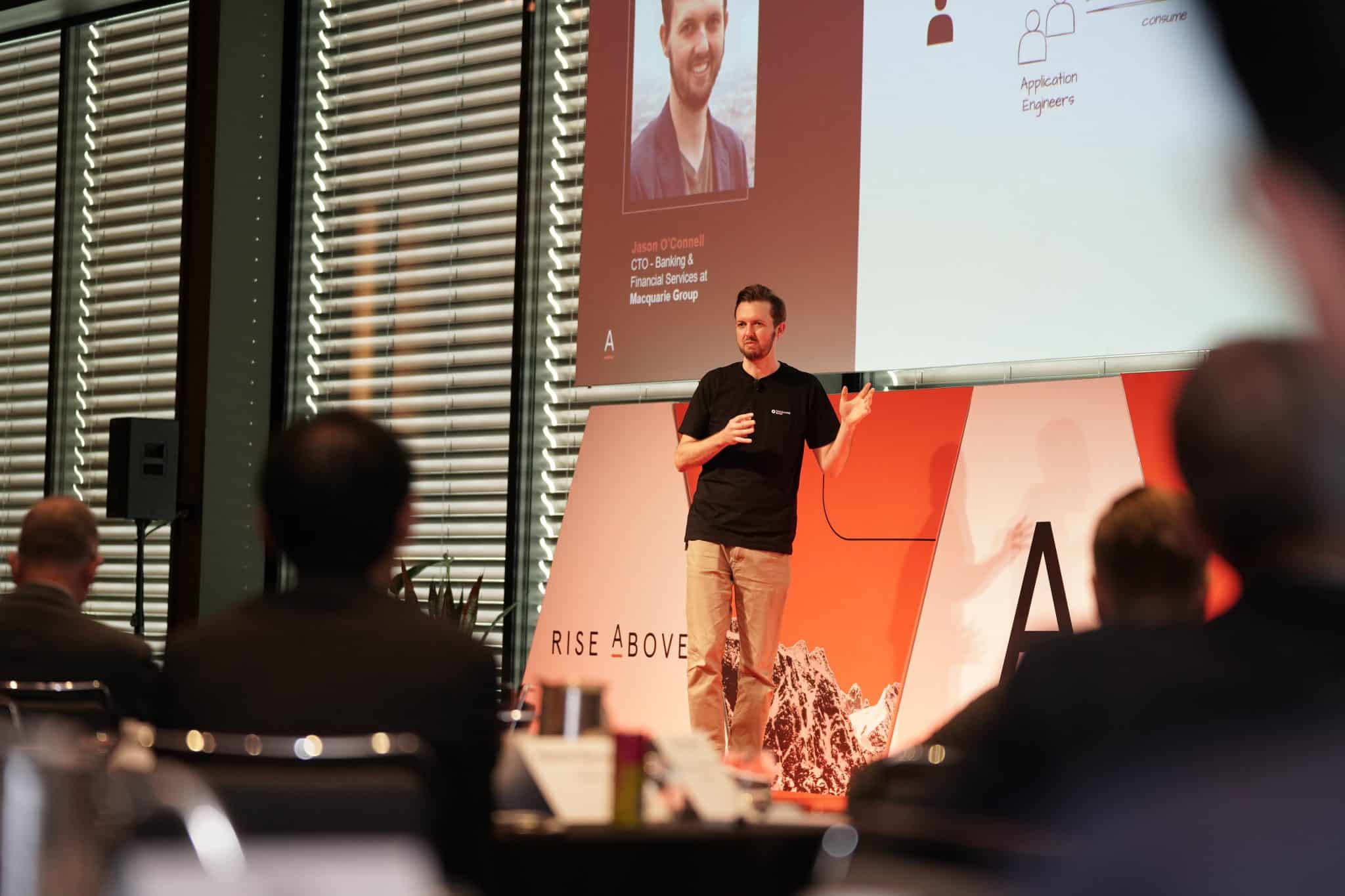
According to the ADAPT Cloud and Infrastructure Edge surveys from March 2023 to July 2024, the talent shortage impacts 28% of leaders’ budgets, pointing to the need for upskilling and attracting talent.
Forming partnerships with educational institutions for internships and leveraging remote work opportunities can help bridge this gap. Developing internal training programs and certification paths for current employees can also build necessary skills from within.
Adopting a microservices architecture facilitates the gradual replacement of monolithic systems and attracts talent interested in modern technologies.
Containerisation tools like Kubernetes enable seamless integration and scalability.
Key Takeaways:
- Optimise resources by reallocating underutilised assets and reducing technical debt.
- Address talent shortages through educational partnerships, remote work opportunities, and internal training programs.
Focusing investment on strategic technologies
According to the ADAPT Cloud and Infrastructure Edge Surveys conducted from March 2023 to July 2024, investing in multi-cloud architecture and engineering skills is a priority for leaders.
Leaders are establishing centres of excellence to drive best practices and governance.
Generative AI is another critical area for investment. In fact, 65% of infrastructure leaders surveyed said they plan to integrate AI into their technology roadmap.

The panel discussion on AI readiness, which included experts Rahul Arya, Chief Architect at NAB, Sarah Carney, National CTO at Microsoft, and Craig Scroggie, CEO and Managing Director at NEXTDC, highlighted the substantial demands AI technologies will place on digital infrastructure.
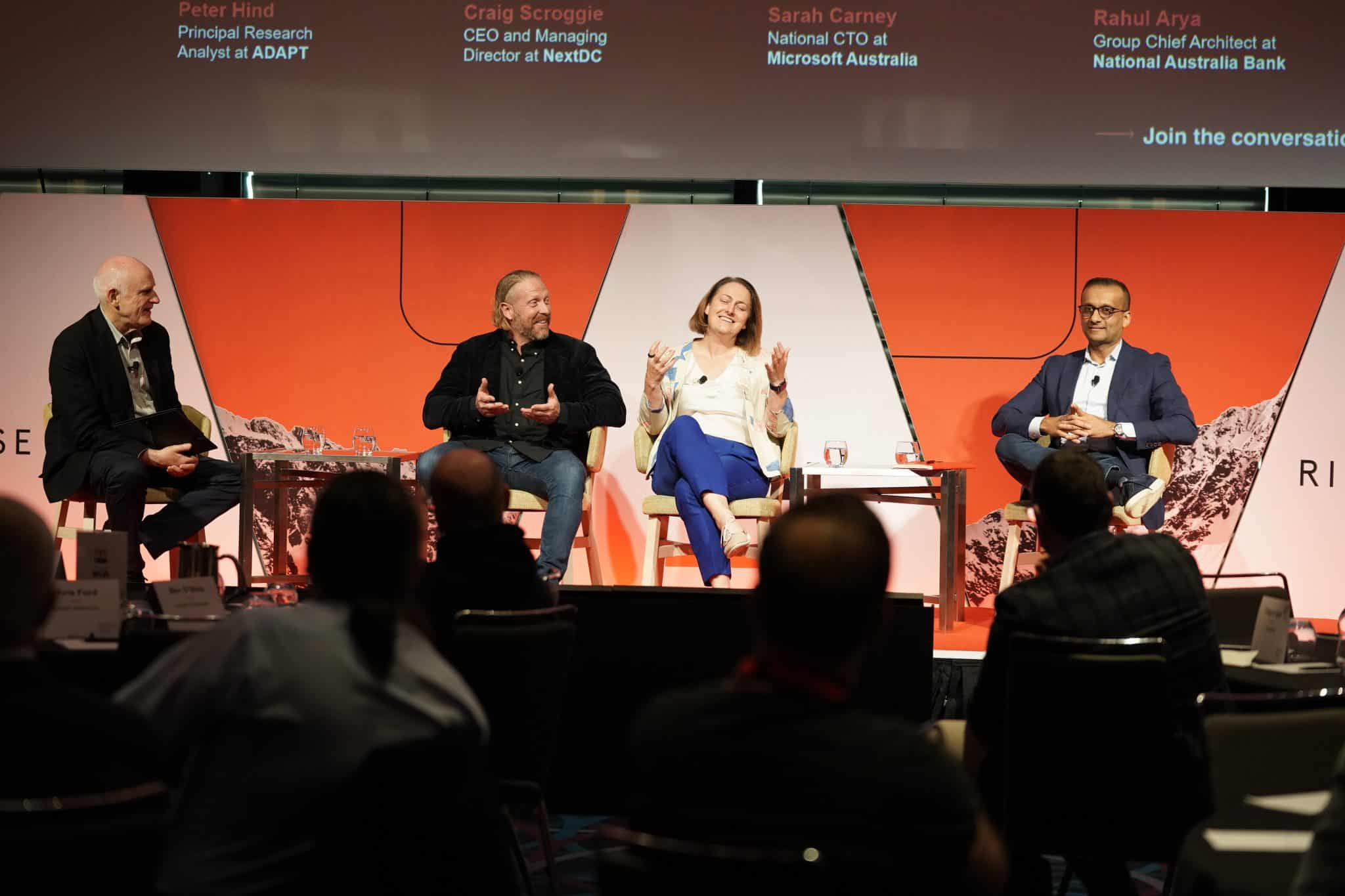
The discussion forecasted a 35% increase in computing needs within the next two years.
Additionally, the panel emphasised the need for ongoing investment in scalable and sustainable data centres to support this growth.
They also talked about the crucial role of cybersecurity measures in protecting sensitive data in AI deployments.
Platform as a Service (PaaS) solutions are also gaining traction for their ability to streamline the development lifecycle and foster innovation by reducing time-to-market for new services.
Key Takeaway: Focus on developing multi-cloud architecture, generative AI, and PaaS solutions to drive innovation and efficiency.
Embracing sustainability in digital infrastructure
As the demand for more power and compute on our digital infrastructure surges, sustainability emerges as a critical focus for leaders in the industry.
Matt Gurr, AECOM’s ANZ High Tech Market Director, stressed the importance of achieving growth while maintaining sustainability.
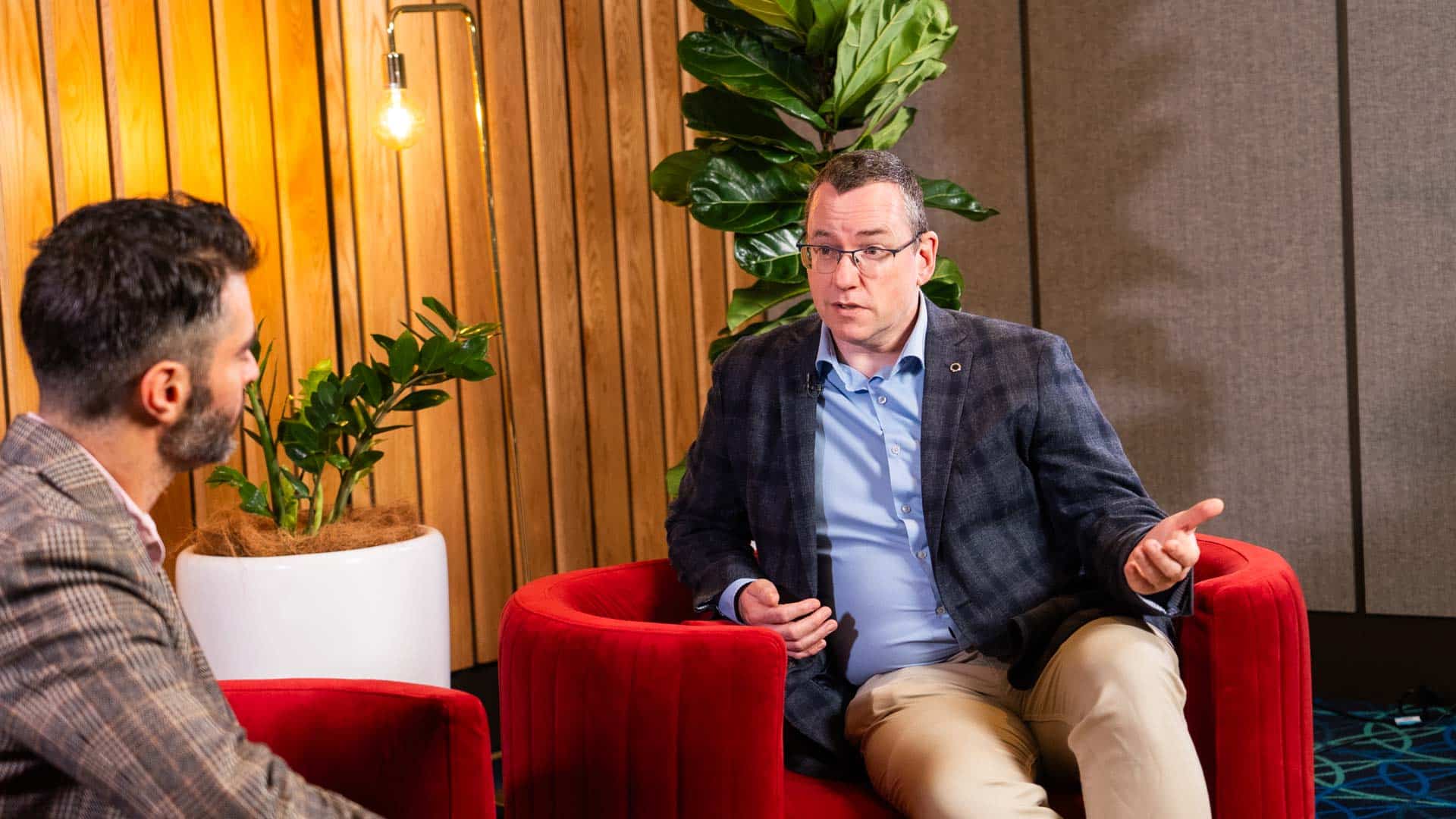
He pointed out that modernisation efforts needed to be balanced with environmental goals, requiring innovative solutions that optimised energy use and reduced carbon footprints.
Meanwhile, Greg Boorer, Founder & CEO at Canberra Data Centres (CDC), highlighted CDC’s leadership in integrating green energy into their data centres.

He emphasised that sustainable energy practices not only supported environmental objectives but also contributed to long-term cost savings, making them a strategic priority in the expansion of digital infrastructure.
Sylvester Kourie, Technical Director for Buildings at Aurecon, advocated for the design of energy-efficient data centres that meet increasing demands without exacerbating environmental impacts.

He supports the use of renewable energy sources and smart grid technologies to ensure that data centres were both scalable and sustainable, aligning with global efforts to reduce carbon emissions.
Leveraging cloud migration for growth
Public cloud adoption now supports 46% of all workloads, marking a substantial increase, as revealed by ADAPT’s surveys from May 2022 to July 2024.
Despite this growth, private cloud adoption remains at 18%, highlighting potential areas for future development.
Notably, 17% of organisations are planning to repatriate workloads from the public cloud to private or on-premises environments, indicating a strategic shift towards hybrid solutions.

Leaders should continually evaluate workloads for migration to the public cloud to maximise scalability and cost efficiencies.
Implementing hybrid cloud strategies can balance performance and security needs.
Power and computing demands are also rising, with 85% of leaders anticipating an increase in power requirements over the next two years,
Preparing for these increases involves optimising infrastructure for energy efficiency and ensuring robust plans for future power needs.
Key Takeaway: Continuously evaluate and migrate workloads to the public cloud while preparing for increased power and compute needs through optimised infrastructure planning.
By leveraging these data-driven insights from ADAPT’s Cloud & Infrastructure Edge surveys and keynote presentations, infrastructure leaders can make informed decisions that drive operational efficiency and strategic growth.
Implementing targeted initiatives, addressing critical barriers, and investing in key areas will be essential for building a robust digital infrastructure.






















